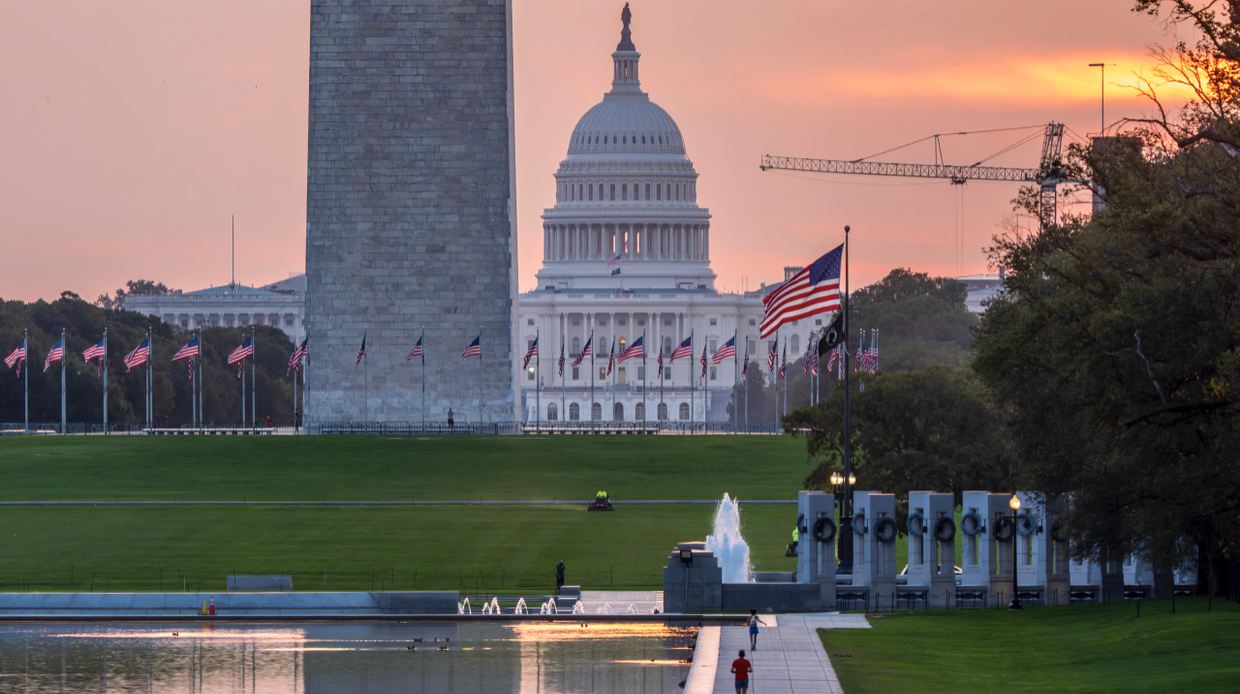By: Karl Rove – wsj.com – September 24, 2025
The only certainty is that public trust in Washington isn’t about to improve.
It looks as if we’ll have another government shutdown. On Friday House Republicans passed a continuing resolution to fund the government. In response, Senate Democrats demanded that the resolution extend Biden-era ObamaCare subsidies that soon expire. Republicans won’t do that, but a continuing resolution requires 60 votes in the Senate, meaning the GOP needs seven Democrats to vote “aye.”
If Americans get stuck with a shutdown that drags on, there will be a cost. But which party will pay the political price?
History gives us an idea. There have been 10 government shutdowns since 1980, three of which lasted more than a handful of days.
The first of these significant shutdowns was a political win for Democrats. It ran from Dec. 16, 1995, to Jan. 6, 1996, and the debate was over when the U.S. would get a balanced budget. Republicans wanted one in seven years, President Bill Clinton in 10. The immediate disagreement was over Medicare spending. The GOP wanted less. The president wanted more, so he vetoed a Republican continuing resolution.
The GOP responded with a short-term resolution that won Mr. Clinton’s approval. But when it expired on Dec. 16, neither he nor Republicans budged. For the next 21 days, much of the government remained shuttered—until the GOP gave in.
Polling projected a shutdown would be a loser for Republicans. In a November 1995 ABC/Washington Post survey, Americans blamed Republicans more than Mr. Clinton for the budget impasse, 49% to 34%. When the shutdown actually hit, Mr. Clinton’s approval in the Gallup poll dropped from 53% to 41%, then rebounded to 52% by late January.
The voter reaction to the shutdown appeared to help Democrats in the 1996 election. Mr. Clinton beat Sen. Bob Dole, 379-159, with a popular-vote margin of 8.5%. Republicans lost four House seats and picked up two Senate seats only because they were up for grabs in the increasingly red South.
The next major shutdown—in October 2013—panned out differently. Sen. Ted Cruz (R., Texas) convinced GOP House members to pass a continuing resolution to defund ObamaCare, which had no chance in the Senate. Fourteen Democratic senators would have had to vote to repeal President Barack Obama’s prized legislative achievement. Democrats were happy to see the media slam Republicans for closing the government. After 16 days, GOP members caved, settling for stricter income-eligibility rules for ObamaCare as a face-saver.
A survey just ahead of the shutdown made it look like Republicans would be the marginal loser: Thirty-nine percent of Americans said they would blame the GOP and 36% the Obama administration. In Gallup polling, Mr. Obama’s approval was relatively stable, dropping from 45% before to 42% during the shutdown, then inching back to 43% after.
Yet the shutdown didn’t seem to hurt Republicans in 2014. The GOP gained 13 House and nine Senate seats.
The fallout from the most recent big shutdown was mixed. It ran from Dec. 22, 2018, to Jan 25, 2019, and came down to President Trump’s border wall funding. Democrats opposed it. The shutdown ended with Mr. Trump signing a continuing resolution that sidestepped his issue.
Mr. Trump’s approval dipped from 39% before the shutdown to 37% during, but rebounded to 44% by Feb. 1. Still, he lost the 2020 election. Republicans gained 13 House seats, but Democrats picked up four Senate seats and control of the upper chamber.
The outcome of the coming shutdown will depend on three factors. First, which side gets their way and therefore looks stronger, as Mr. Clinton did in 1996. Second, which party makes a better case to voters and energizes its coalition, as the GOP did in 2014 and Democrats in 2020. Third, whether other issues loom larger in the nearly 14 months between now and the midterm elections. In our chaotic politics, it’s likely something will.
But no matter what, the biggest shutdown loser will likely be public trust in Washington writ large. Voters see shutdowns as the result of gross incompetence by our leaders. When the National Election Study began in 1958, 73% of Americans said they trusted the federal government always or most of the time. Today, 22% do, a figure that has been close to constant for decades. Washington’s inability to get its fiscal house in order is a big reason why.
Sadly, Washington doesn’t seem to have learned how to avoid shutdowns. But the politics of it are ever surprising.
To see this article in its entirety and to subscribe to others like it, please choose to read more.
 Listen Online
Listen Online Watch Online
Watch Online Find a Station in Your Area
Find a Station in Your Area









 Listen Now
Listen Now Watch Online
Watch Online
